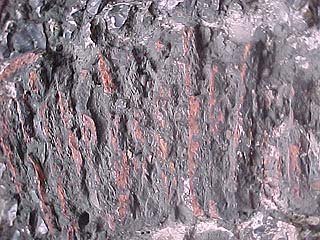 |
||||
 |
||||
 |
||||

Details and Styles
BRICKWORK
"Kentish bricks and brickwork are without doubt
some of the
finest to be seen in the country" Brown p30 - see bibliography
Page 1: Roman tiles
| <Back to Details index | |
For a full discussion of brickwork in English
building see Brunskill and Clifton Taylor (1977) in the bibliography.
These pages shows some examples of the types of bond used in Canterbury
- i.e. the ways the bricks were put together.
|
We start with Roman bricks - properly called 'tiles' as they are relatively thin. According to Clifton Taylor they are "broad and thin and usually, because of their thinness, very well burnt, which is the main reason why, generally reused, so many have survived." (Clifton Taylor 1997:13). He also says that most are no more than 1.5 inches thick but in length and breadth may be twice the size of modern bricks. But he says they do not play a significant part in the story of English brickwork. |
|
| Detail of south wall of Saint Martin's church, showing reused red Roman bricks. |
 |
|
Roman bricks in the City walls to the right of
Queningate - in fact the curved top of the original Queningate through
which Bertha probably walked on her way to Saint Martin's Church
|
 |
|
|
|
Copyright Stephen Bax 1999